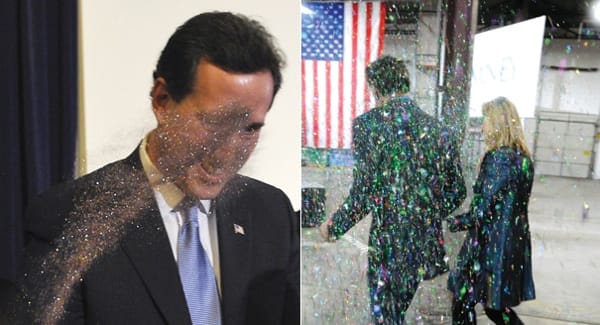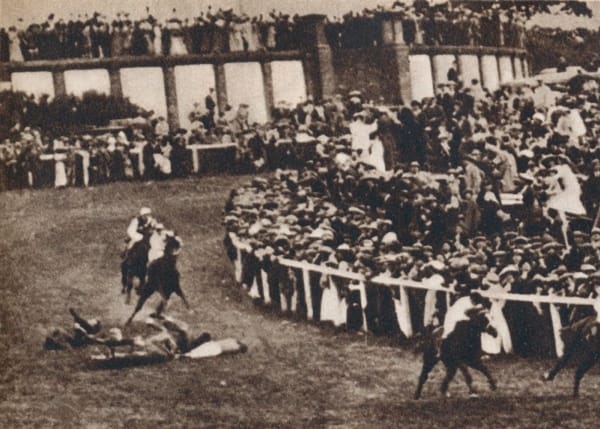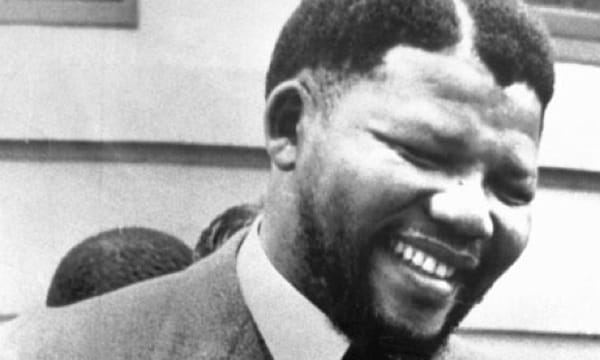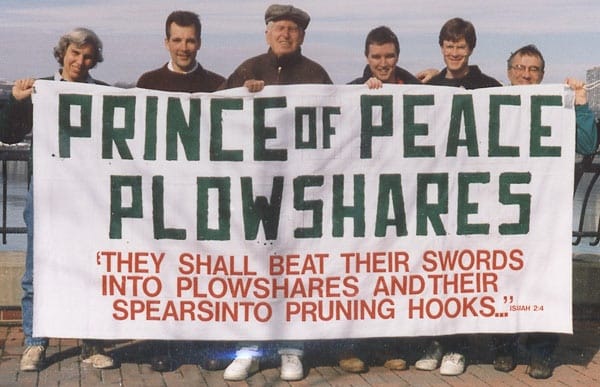Peace movements. The name itself suggests harmony, non-violence, and a quest for a better world. But what happens when the very groups advocating for peace cross the line into violence? It’s a surprising twist, yet history shows us several instances where those championing noble causes have, for various reasons, resorted to actions that seem to contradict their core beliefs. Let’s delve into 10 such cases where peace movements engaged in violence, prompting us to think deeper about their methods and motivations.
1. Glitter Bombing: A Sparkling Form of Protest

What is Glitter Bombing?
Glitter bombing isn’t linked to any single organization. It has become a common tactic used by some pro-gay rights activists. They target individuals who publicly speak out against gay rights by throwing glitter on them. This action often sparks debate: is it just a harmless prank, or is it a form of assault?
Reactions and Legal Standing
Reactions vary. Some people who are glitter bombed take it with a sense of humor. However, many others find it offensive and disrespectful. Public figures, like Mike Huckabee, have strongly condemned it, calling it assault and battery. Some even suggest it could be sexual harassment, especially if activists make claims about the victim’s sexuality after the act.
Legally, glitter bombing is in a gray area. It can be seen as disturbing the peace, an act of public humiliation, or an invasion of privacy. For instance, Mitt Romney experienced glitter bombing twice during his presidential campaign. After the second incident, the person responsible was detained by the Secret Service. They later pleaded guilty to disturbing the peace but faced no jail time.
2. Pie in the Face: PETA, Al Pieda, and the Biotic Baking Brigade

The Tactic: Pie-Throwing as Protest
Several groups have used pie-throwing as a form of protest. Al Pieda, whose name sounds like “al-Qaeda,” describes itself as a U.S. terrorist group. They protest conservative viewpoints, especially those seen as intolerant towards gay rights, by throwing pies. The Biotic Baking Brigade is a similar, more organized group with the same methods.
Even People for the Ethical Treatment of Animals (PETA), which generally promotes nonviolent protest, has been involved in pie-throwing incidents. While the famous pieing of Bill Gates was reportedly a prank by an individual, other public figures have been targeted for their stances. Ann Coulter and William Buckley were pied for their conservative views or perceived opposition to gay rights, feminism, and environmental issues. Fred Phelps of the Westboro Baptist Church was also pied, an act that, while some felt was deserved, only seemed to make his movement more extreme.
Legal Consequences
These groups use pieing to demand equal rights for various causes. However, throwing a pie at someone is legally considered assault. Many members of these groups have been arrested and faced legal action for their actions.
3. Greenpeace vs. Whalers: A High-Seas Ramming
Greenpeace’s Mission and Methods
Greenpeace is one of the most well-known environmental organizations globally, active in over forty countries. Their mission is to “ensure the ability of the Earth to nurture life in all its diversity.” They work to stop nuclear weapons, deforestation, global warming, and particularly overfishing.
The organization is very open about its opposition to commercial fishing, especially whaling, which continues legally in some parts of the world. Japanese whalers, in particular, have drawn criticism for their practice of killing bottlenose dolphins for food, despite concerns about high mercury levels in dolphin meat.
The Arctic Sunrise Incident
On January 8, 2006, a notable incident occurred. The Greenpeace ship, Arctic Sunrise, deliberately rammed the Japanese whaling ship, Nisshin Maru. The whaling ship was reportedly trying to avoid the smaller, more agile Greenpeace vessel. Despite warnings, the Arctic Sunrise continued its course and collided with the Nisshin Maru. Greenpeace filmed the event and claimed the Japanese ship was aggressive and that the Arctic Sunrise simply held its ground. This incident highlights the direct and confrontational tactics Greenpeace sometimes employs.
4. Earth Liberation Front (ELF): Arson for Activism

ELF’s Philosophy and Structure
The Earth Liberation Front (ELF) states that it uses “economic sabotage and guerrilla warfare to stop the exploitation and destruction of the environment.” ELF operates in at least seventeen countries, including the U.S. and many parts of Europe, Asia, and Australia. It doesn’t have official headquarters; instead, it’s a network of secret cells acting anonymously.
This secrecy is necessary because the FBI has identified ELF as a top domestic terror threat. The group’s members identify as animal liberationists, anarchists, anti-capitalists, and eco-feminists.
Notable Acts of Arson
ELF gained significant attention after burning down a ski resort in Vail, Colorado, causing $12 million in damage. Their goal was to prevent logging and protect lynxes in nearby forests. They have also claimed responsibility for burning parts of the University of Washington campus in Seattle and destroying over 400 SUVs and Humvees at dealerships. ELF is also suspected in the 2008 “Street of Dreams” house fires in Washington, where three mansions were destroyed, resulting in seven million dollars in damage.
5. The Suffragettes: Fighting for the Vote

The Fight for Women’s Suffrage
The Suffragettes were women who fought passionately for the right to vote. The movement for women’s suffrage was a long one. In the United States, women didn’t get the national right to vote until 1920. Protests for this right gained momentum in England around 1912 when some actions turned violent.
In England, some women began burning mailboxes, chaining themselves to railings in public buildings, and even setting off explosives in public areas and post offices. Some of these women were imprisoned and force-fed when they went on hunger strikes. The British government at the time opposed women voting and sometimes released weakened hunger strikers only to re-arrest them later.
Emily Davison’s Tragic Protest
A dramatic and tragic event occurred on June 5, 1913. Suffragette Emily Davison went to the Epsom Derby, a major horse race. During the race, she ran onto the track. Her aim was to attach a suffragism banner to King George V’s horse, Anmer. Sadly, the horse, unable to stop or swerve in time, collided with her. Davison suffered severe injuries, including a fractured skull, and died four days later. While her death was a tragedy, the confrontational actions of the Suffragettes did contribute to the eventual granting of unconditional voting rights to British women in 1928.
6. Nelson Mandela: Resisting Apartheid with Force

The Struggle Against Apartheid
Nelson Mandela is a key figure in the anti-Apartheid movement in South Africa. Apartheid, meaning “segregated” in Afrikaans, was a system of racial discrimination from 1948 to 1994. Under this regime, the white minority government denied basic human rights to Black South Africans.
Mandela began his resistance soon after Apartheid started. He strongly supported direct action, not just passive non-violence. He encouraged members of his organization, the African National Congress (ANC), to get weapons for self-defense, though he initially advised against unprovoked attacks. He seemed conflicted, publicly suggesting non-violent non-cooperation like Mohandas Gandhi. However, by 1955, Mandela concluded that violent resistance was necessary to end Apartheid’s abuses.
Spear of the Nation
Mandela is known to have physically fought Apartheid police at numerous protests. In 1961, he co-founded Umkhonto we Sizwe (Spear of the Nation). He directed its members to carry out acts of sabotage, like cutting communication lines and blowing up railways, to weaken the government. He warned that if this failed, “guerrilla warfare and terrorism” would follow. On December 16, 1961, his group bombed 57 businesses, law firms, and other targets. No one was killed, but people were injured. Mandela was arrested in 1962 and sentenced to life in prison. He served 27 years before his release in 1990. Apartheid officially ended in 1994.
7. The Plowshares Movement: Disarming Nuclear Weapons

Inspired by Peace
The Plowshares Movement took its name from a Bible passage in Isaiah about turning swords into plowshares, symbolizing world peace. The group sees itself as Christian pacifists. However, their actions on September 9, 1980, were far from passive. They broke into a General Electric nuclear missile facility near King of Prussia, Pennsylvania.
Direct Action Against Nuclear Arms
Founded by Daniel Berrigan, the movement’s main goal is to eliminate all nuclear weapons. They claim to be nonviolent towards people but advocate for violence against property if it hinders a nation’s nuclear capabilities. They have carried out over eighty such actions on four continents. In their first major act at the Pennsylvania missile base, they damaged eight nuclear warhead nosecones. They didn’t know if their actions could trigger the devices. Luckily, the warheads had multiple safety features and were not armed, so they couldn’t detonate. However, these warheads contained weapons-grade plutonium, which the activists nearly exposed to the air, an act that could have had deadly consequences for them and the surrounding area.
They also broke into research offices, destroyed classified documents, and poured cow blood on them and the furniture. The eight original members involved were arrested after breaking windows triggered an alarm. They all served ten years in prison before an appeal led to new sentences, and they were paroled with time served.
8. Sea Shepherds: Confronting Whalers on the High Seas
Mission and Tactics
The Sea Shepherd Conservation Society (SSCS) has a mission similar to Greenpeace: protecting marine life. Their activities are famously documented on the Discovery Channel show “Whale Wars.” The show follows the SSCS as they repeatedly harass Japanese whaling vessels, often near Antarctica. Their stated goal is to end whaling through “direct action,” which often means confrontational and sometimes violent tactics.
The Steve Irwin Incident
One well-publicized incident occurred on February 6, 2009. The SSCS vessel Steve Irwin, named after the late crocodile hunter, was involved in a collision with the Japanese whaling ship Yushin Maru 2. Reports suggest the Steve Irwin approached the Yushin Maru 2 from behind and turned its bow into the side of the whaling ship’s stern, similar to a police PIT maneuver.
At the time, another whaling vessel, the Yushin Maru 1, was hauling a dead whale. Paul Watson, founder and president of SSCS, claimed the collision was due to reckless driving or a deliberate attack by the Yushin Maru 2. The Japanese crew stated they were simply doing their job when the Irwin rammed them. The Japanese crew used water cannons and LRADs (Long Range Acoustic Devices), powerful sonic weapons, to try to deter the Irwin. The collision nearly caused the Yushin Maru 2 to capsize. SSCS has proudly taken responsibility for such actions, maintaining they are necessary to protect whales.
9. The Boston Tea Party: A Revolutionary Protest

Roots of Rebellion
The original Boston Tea Party was a protest against excessive British taxes on the thirteen American colonies. The colonies were founded by people seeking freedom from oppression in England. However, Britain maintained control, initially through alliances and later through force. By the time of the American Revolution, Britain treated the colonies as a source of revenue, taxing almost everything heavily.
The Sons of Liberty Take Action
The Sons of Liberty was a group formed to demand lower taxes, using violence if necessary. On December 16, 1773, a group of thirty to 130 Sons of Liberty, partly encouraged by Samuel Adams, boarded three British merchant ships in Boston Harbor. Over three hours, they broke open 342 large chests of tea and threw the tea and chests into the water. This tea had been shipped to America with a very high tax. Other colonies had refused to accept the tea, but Massachusetts did not. This act of defiance greatly angered the British and is considered one of the key events that sparked the American Revolution.
10. Jesus Clears the Temple: Divine Disruption

A Triumphant Entry, A Fiery Act
Consider this well-known biblical story in a new light. The Synoptic Gospels (Matthew, Mark, and Luke) describe Jesus entering Jerusalem triumphantly on Palm Sunday. Shortly after, He went to the Temple and confronted the men exchanging money and selling livestock. The people had been enthusiastic about His arrival due to His miracles and healings.
Upon seeing the merchants and money changers, Jesus reportedly became enraged – one of the few times He shows such strong anger in the Gospels. He overturned their tables, scattering their coins. He opened bird cages, releasing the birds, and drove out the livestock, possibly using a makeshift whip. He may have even physically confronted the men themselves.
Interpreting the Action
The placement of this event at the beginning of Jesus’ final week in the Synoptic Gospels suggests it was a significant factor leading to the decision to crucify Him. He had already challenged the religious authorities for years, drawing large crowds to His teachings and away from theirs. His act of clearing the Temple can be seen as a form of “direct action,” similar to tactics used by some modern peace movements. While He didn’t physically harm anyone in a lasting way, His actions would likely be viewed as assault or causing a public disturbance by modern standards, and certainly by the authorities of His time.
These ten examples show a surprising side to movements often associated with peace. They highlight the intense passion and sometimes desperation that can drive individuals and groups to take drastic actions. Whether these acts were justified, effective, or truly violent is often debated. They force us to consider the complex line between passionate protest and harmful aggression. What remains clear is that the path to achieving goals, even peaceful ones, can sometimes take unexpected and controversial turns.
What are your thoughts on these instances? Do you believe violence is ever justified in the name of a cause? Leave your comment below and join the discussion!










